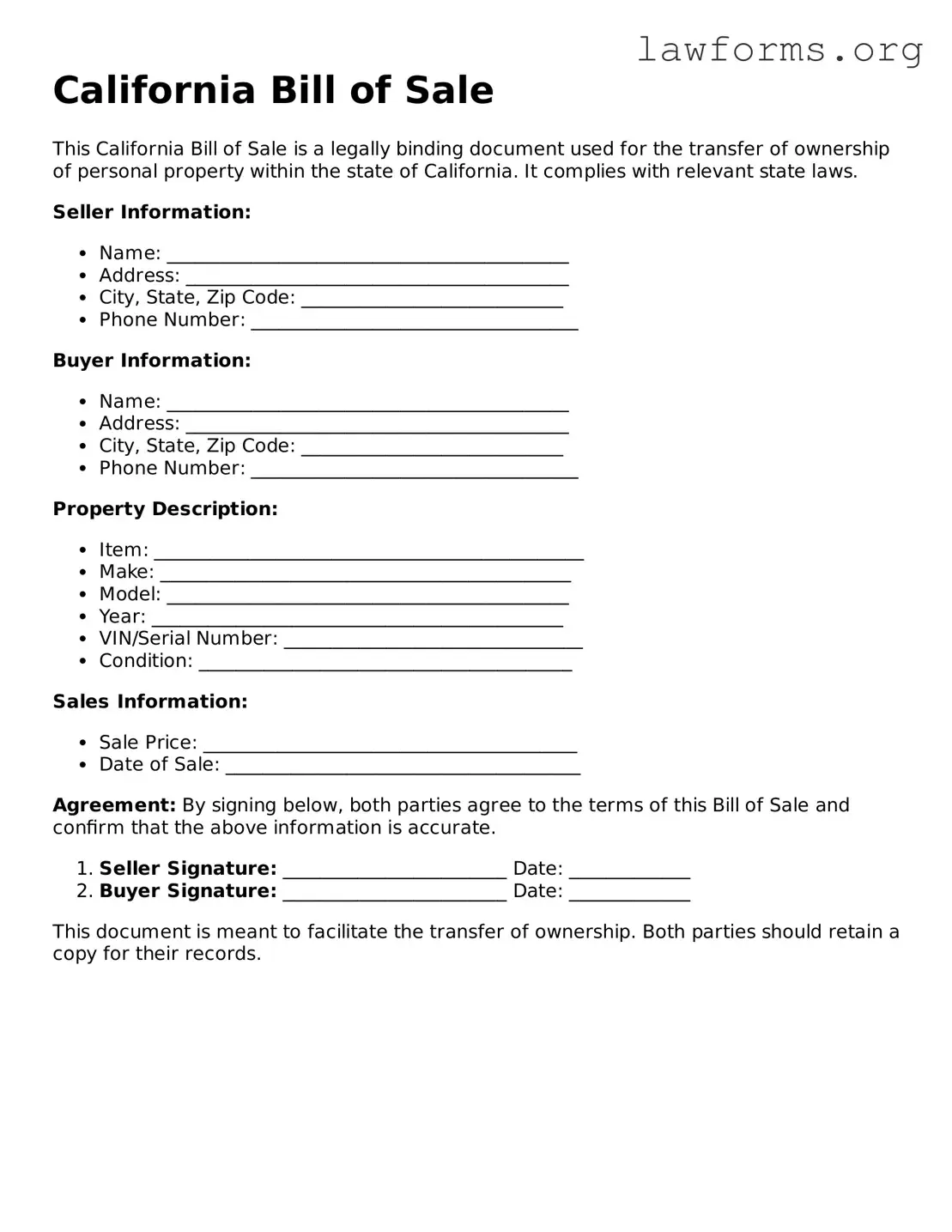California Bill of Sale
This California Bill of Sale is a legally binding document used for the transfer of ownership of personal property within the state of California. It complies with relevant state laws.
Seller Information:
- Name: ___________________________________________
- Address: _________________________________________
- City, State, Zip Code: ____________________________
- Phone Number: ___________________________________
Buyer Information:
- Name: ___________________________________________
- Address: _________________________________________
- City, State, Zip Code: ____________________________
- Phone Number: ___________________________________
Property Description:
- Item: ______________________________________________
- Make: ____________________________________________
- Model: ___________________________________________
- Year: ____________________________________________
- VIN/Serial Number: ________________________________
- Condition: ________________________________________
Sales Information:
- Sale Price: ________________________________________
- Date of Sale: ______________________________________
Agreement: By signing below, both parties agree to the terms of this Bill of Sale and confirm that the above information is accurate.
- Seller Signature: ________________________ Date: _____________
- Buyer Signature: ________________________ Date: _____________
This document is meant to facilitate the transfer of ownership. Both parties should retain a copy for their records.
